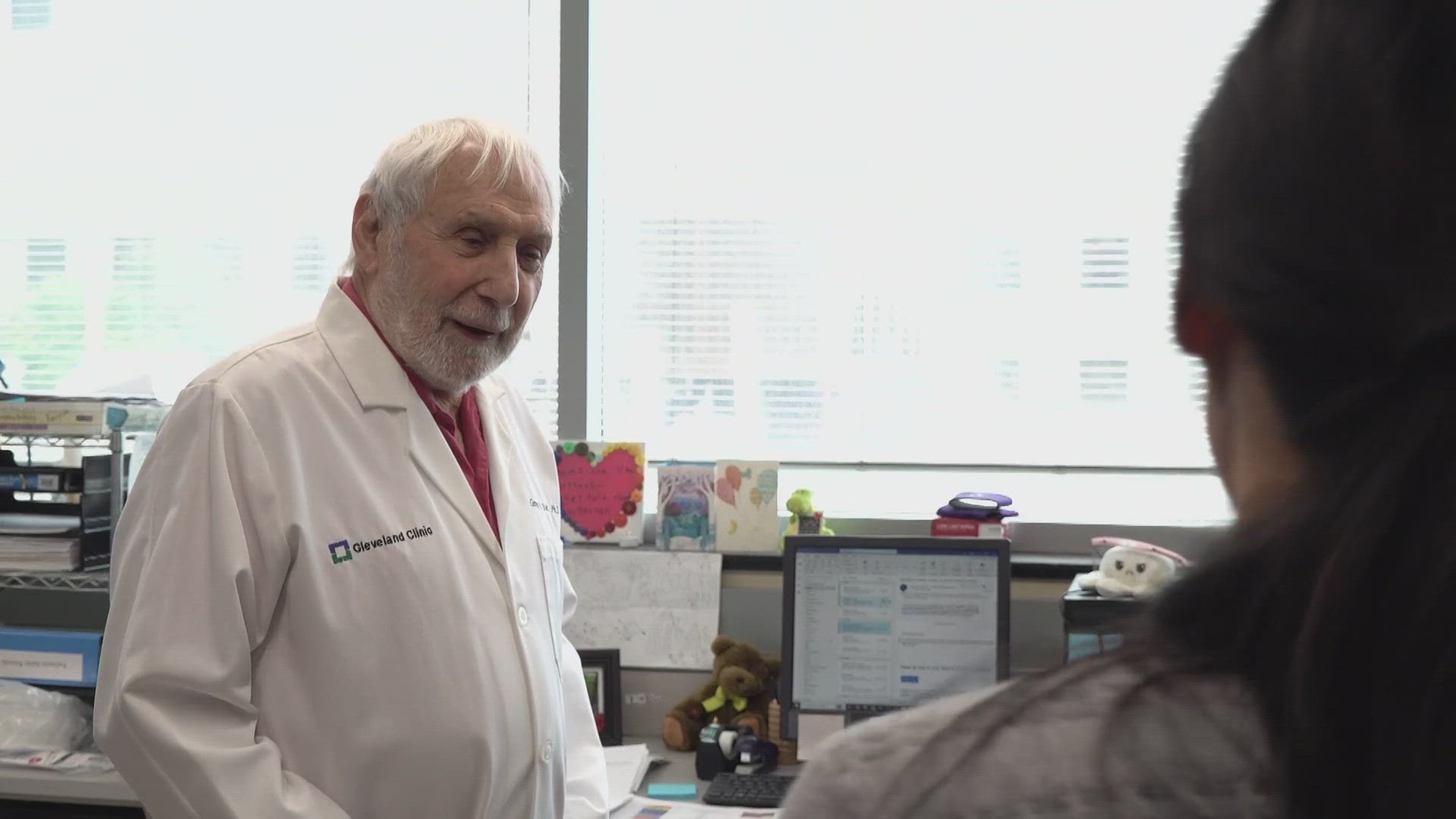CLEVELAND — Ever heard of the JAK-STAT pathway?
Maybe not, but without its discovery, we wouldn't have dozens of medications, including cancer treatments and even that COVID vaccine. Dr. George Stark is part of the team that discovered it in 1992.
"I went back last year or something like that and read my PhD thesis, which was completed in 1959," Stark recalls. "And I went back and looked at it and I said, 'How could I possibly have taken four years to do that?' you know? Because now, that would be something that a high school student could do as a training exercise."
Stark ran labs at Stanford and in London. As he approached the UK's mandatory retirement age of 62, he wasn't ready to slow down.
The same year of the JAK-STAT pathway discovery, Stark came here, taking over Cleveland Clinic's research institute. Under his leadership, it nearly doubled in size.
Fast forward 30 years, and Dr. Christine McDonald came across Starks research from 50 years ago as she was working on a better way to fight skin cancer.
"50 years ago, we were protein biochemists trying to study the mechanism of an interesting enzyme, and we designed this very specific type binding inhibitor for the enzyme called pala," Stark explained to us. "The enzyme is required for DNA and RNA synthesis in cells. So, when pala is put on cells, they die, because they can't make DNA and RNA and they basically can't live."
Pala never made it out of the lab because it couldn't be stabilized. McDonald had a different idea.
"What she found was that it was somewhat effective — not as much as she would have hoped, but very surprised," Stark said. "Mainly, it was not toxic at all.
"So, when you give pala internally to try to treat a tumor at a certain level, it's toxic; on the skin, not, and so we said, 'Aha! We've got an anti-tumor drug which is activating an important immune response and it's not toxic on the skin.'"
From that, they developed an ointment and tested it in the lab.
"We found that pala — in enlightenment now — was still toxic and actually curative for the tumors," Stark noted. "It was causing the tumors in the mice to go away, and that, you know, got our enthusiasm very high and the clinic's enthusiasm very high."
The study findings were published this summer, right before Stark's 90th birthday.
You heard that right — the 90-year-old scientist is still helping create medical breakthroughs, and has no plans on slowing down.
"I love the people in my lab now," he says. "We have such a good time together and so people are enthusiastic, and I remain enthusiastic. So just keep that enthusiasm, have fun, do something important, but have fun while you're doing it
Stark has no plans to retire; he intends to watch the pala research progress. If all goes well, before his century milestone, the world will have an ointment that cures skin cancer.
"You know, I never thought about it one way or another," Stark admits. "I just go day to day and, you know, get up in the morning and do it."

